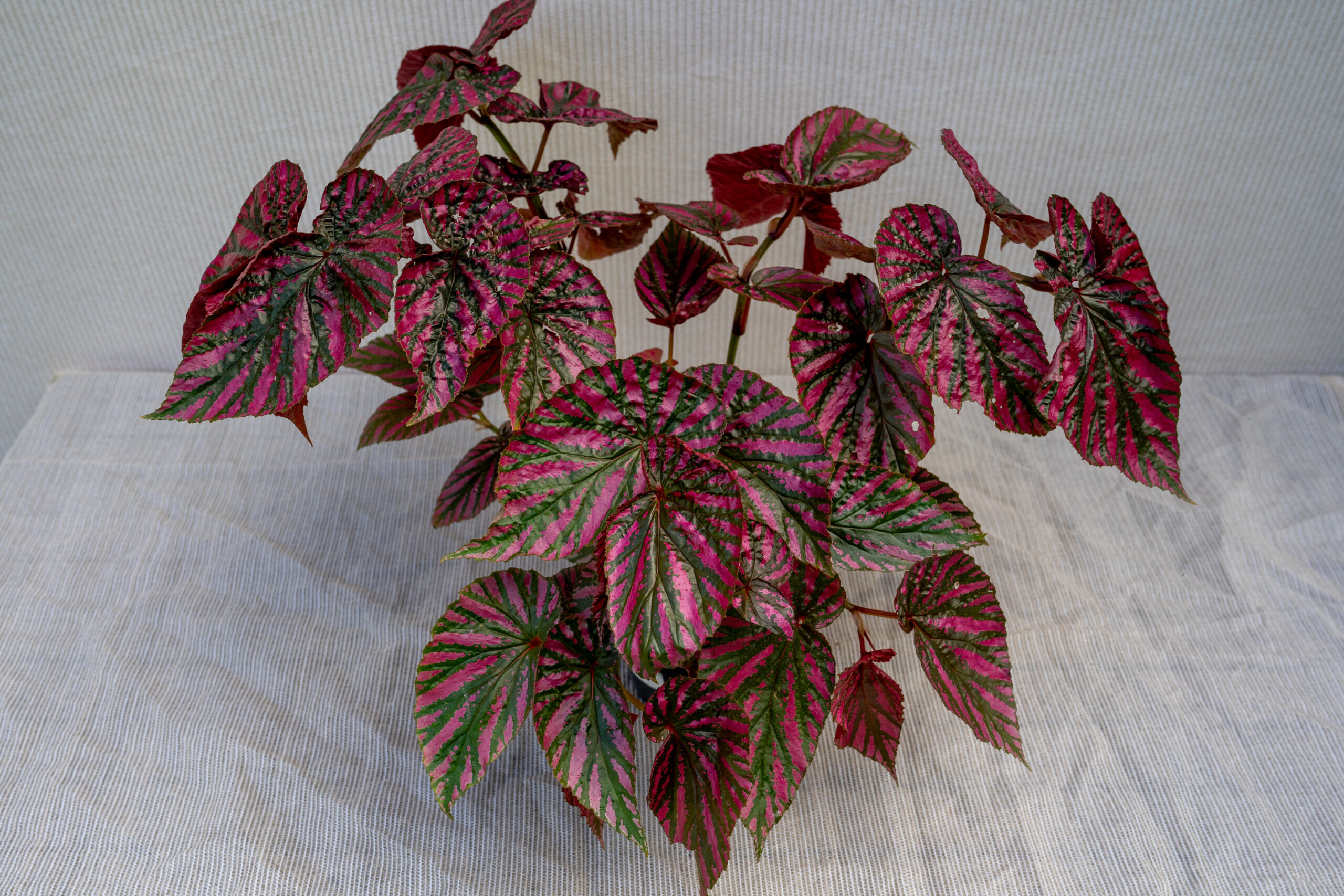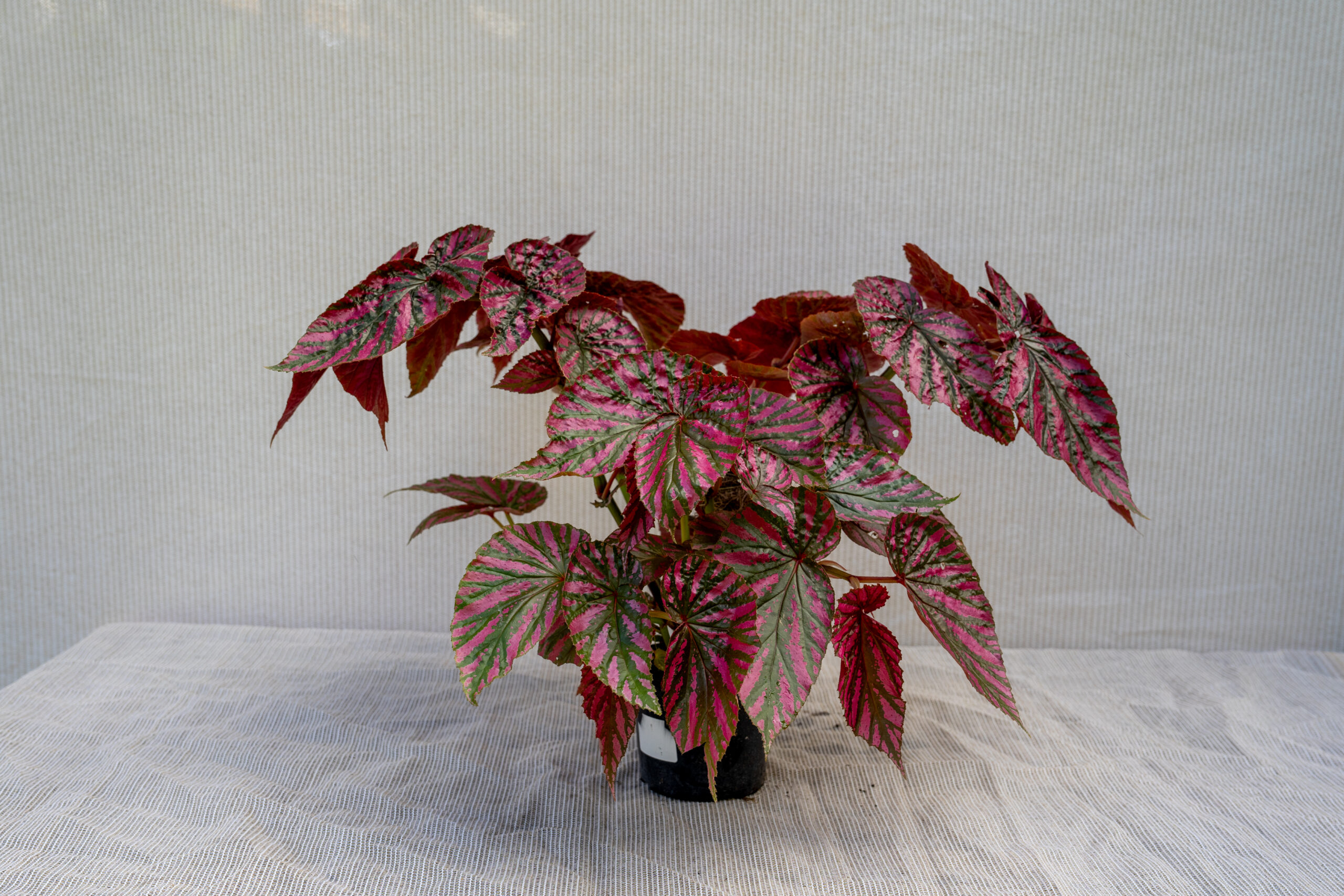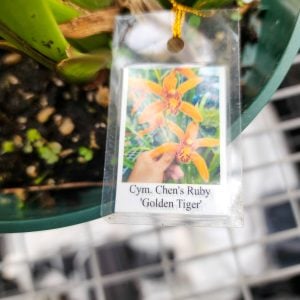Begonia Brevirimosa
$49.99
rom the rain forest of Malaysia comes one of the most striking fibrous begonias in cultivation. As if touched by an artist’s hand, the vibrant tones of bright rose-red highlight the large leaves and upright growth. Not often seen, this glorious species prefers high humidity and warm temperatures. When grown indoors, it will spice up any collection, or use it in the summer garden to bring color and texture to planters or window boxes.
Select any combination of 2 or more plants for a 15% to 20% discount (some exceptions may apply)
Discount per quantity
| Quantity | Price | % Discount |
|---|---|---|
| 2 | $44.99 | 10% |
| 3 | $39.99 | 20% |
| 4+ | $37.49 | 25% |
- Description
- Additional information
- Reviews (0)
Description
Begonias are some of the easiest plants to grow in containers. This group of warm-loving plants was originally found in the forest understory in tropical and subtropical areas. Foliage begonias, like rex begonias, are grown for their fancy leaves that have many beautiful colors highlighted by unusual markings and swirls in the foliage. They make a sensational statement when grown on a partially sunlit windowsill. Flowering begonias, like Begonia boliviensis hybrids, are usually grown as annuals in the summer garden. Many new varieties are non-stop bloomers and some perform well in full sun or partial shade.
Begonia Care
Choose an indoor type of begonia. This list of begonias that grow well indoors is extensive. It is important to remember that some types of begonias are grown for their brilliantly colored flowers, while other begonias are enjoyed for their unique and beautiful foliage. Most begonias bought at nurseries will be labeled as indoor plants or outdoor plants.
- There are two main categories of cultivated begonias based on growth habits. Also there are hybrids within these groups.
- Cane Begonias grow upwards on tall stems that resemble bamboo in appearance. The Angel Wing Begonia is a common example.
- Fibrous root Begonia species have stems that are directly attached to the crown of the plant like that of radish leaves. This group includes the Rex Begonia hybrids.
- If you are still uncertain of whether or not your plant will work well indoors, ask an employee at your local nursery.
Place indoor begonias where they get bright light. Begonias like a lot of light so place them on windowsills that face east or west so that your plants get several hours of sunlight each day. Avoid southern windows from February through September, as they let in too much light, unless you hang thin curtains that filter the light.
- Be sure to filter the light coming from eastern or western windows if these face concrete or water.
- If you choose to use fluorescent lights, you should place it 6 to 12 inches above your plant. You should keep the light on for roughly 12 hours a day, though some begonia growers leave their lights on for 14. Keep in mind that you will need to water your plant more often when you use artificial light.
Water begonias carefully. Water your plants when the surface of the potting soil feels dry to the touch. You should water your plants more frequently when it is warm, the light is bright and the begonias are flowering heavily and putting out new growth. Water your plant until water runs out of the drainage holes.
- Let the potting soil dry out slightly between watering during lower light and cooler temperatures of late fall and winter.
- If possible, use room temperature water that has been distilled. Promptly empty drained water from trays and saucers.
- Mist the foliage of Rex (foliage) type begonias twice a week or provide high humidity to avoid leaf drop. Use warm water in a misting bottle.
Fertilize your begonias. You should fertilize your winter-blooming plants with a high-phosphorus, water-soluble fertilizer that contains little or no nitrogen. Do this once a month from February through September. Fertilize your plants less frequently during the late fall and winter months because your plant will not be growing as steadily during this time.
- Mix the fertilizer according to the label’s directions.
- Wait three months before fertilizing if the potting mix you used contained fertilizer.
Keep indoor begonias warm. You will want to make sure that the minimum night temperature is 55ºF (13ºC). Begonias do not handle cold well and will suffer from lower temperatures.
- Begonias should also be kept in a relatively humid environment.
- Keep your begonias away from any drafty windows which may affect their health.
Alocasia plants grow best in high humidity. To increase the humidity, place the plant on a tray filled with pebbles and water. Be sure the plant is sitting on the pebbles and not in the water. You can also increase the humidity by placing a small humidifier near the plant or grouping plants together. Do not mist the plant; misting encourages plant diseases.
Groom the plants regularly. Your should remove dead flowers and leaves. You should also trim off broken stems to promote plant growth. Dust the leaves if it is needed.
- Remove the small flowers of Rex type begonias as they start to bloom to concentrate the plants energy on foliage. of water and spray the remaining leaves with it. It would also be a good idea to increase the air circulation around the plant to prevent further incidences.”
Pick the right location for planting. Plant all types of begonias outside in a partly or lightly shaded location after all danger of frost has passed. Use Tuberous begonias for planters or hanging baskets. Use fibrous rooted begonia for creating beautiful flower beds.
- Place begonias where they get early morning or late afternoon sun to ensure that you get the best bloom. You can also place them in a location where they get dappled sunlight all day.
- Avoid sitting begonias in containers on hot surfaces such as asphalt or concrete.
- Start tuberous begonias inside 3 months before your last frost in the spring for best blooming results. See notes on how to start them.
When potting your begonias, you should keep three factors in mind: the type of soil, the size of pot, and the amount of soil you use.
- When choosing your potting material, you want the soil to be relatively neutral or slightly acidic on the pH scale.
- Your pot should roughly fit the size of your plant–you want to keep root growth in mind but do not want the pot to be overly large.
- A pot that is too large can lead to using too much soil. When a pot contains too much soil, it can lead to soggy soil that could potentially ‘drown’ your plant roots and kill your begonia.
- Some people also grow begonias in wet stones or small pebbles as a top medium. You don’t have to completely bury the plant’s rhizome to do this. Just place it on top of the stones.
Additional information
| Weight | 4 lbs |
|---|---|
| Dimensions | 20 × 6 × 6 in |
| Light Condition | Shade |
| Pot Size |
Only logged in customers who have purchased this product may leave a review.




































Reviews
There are no reviews yet.